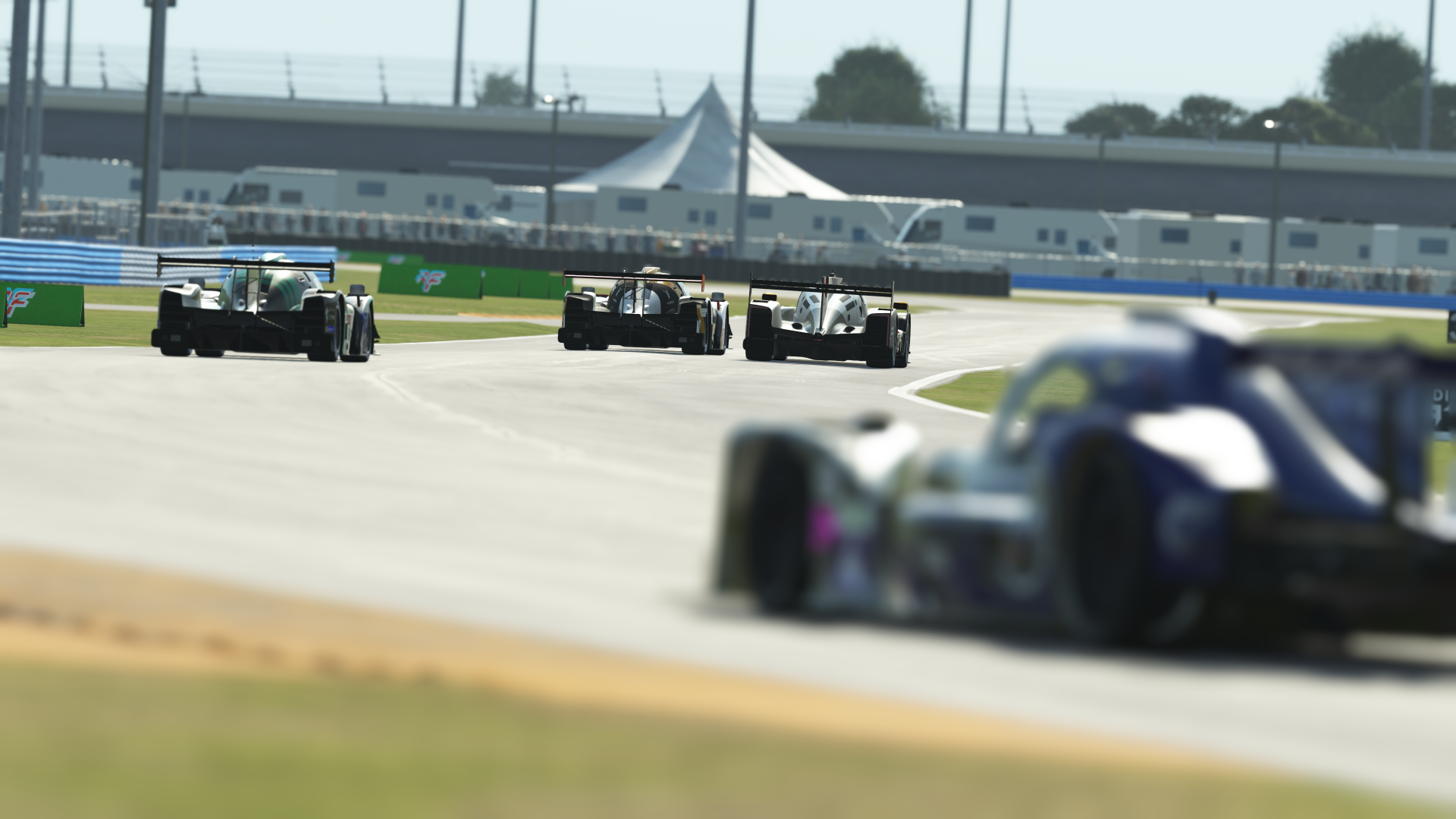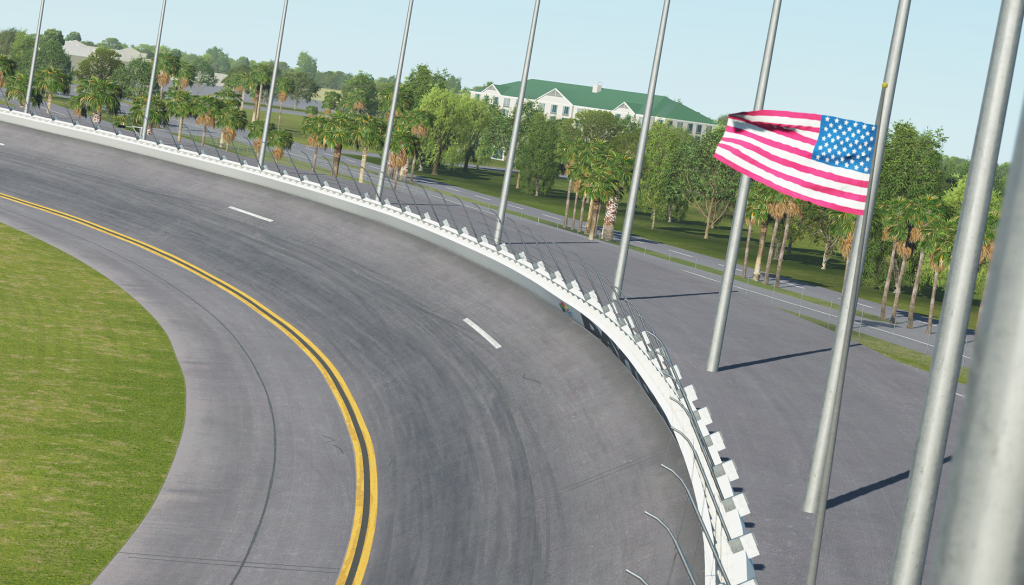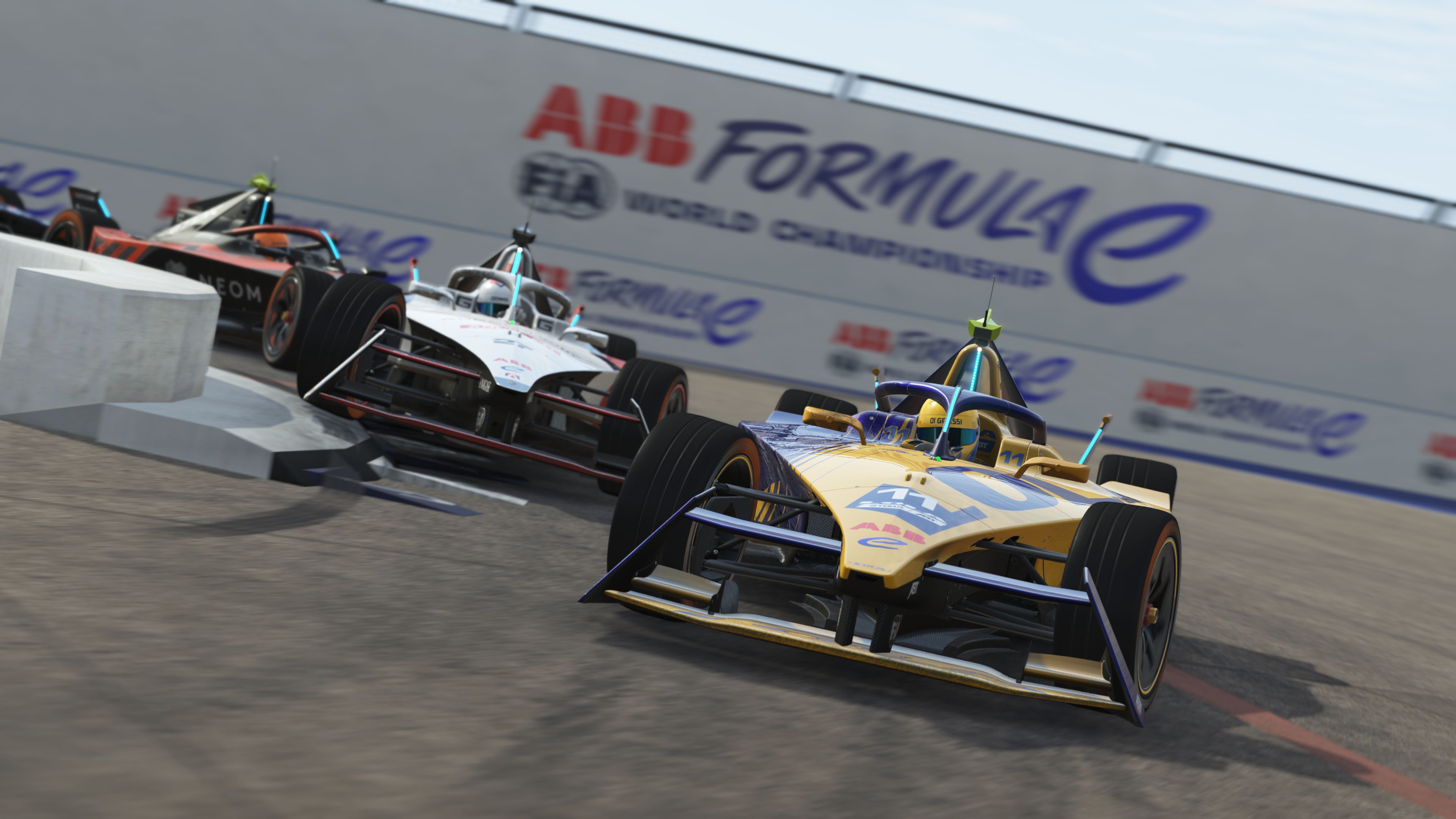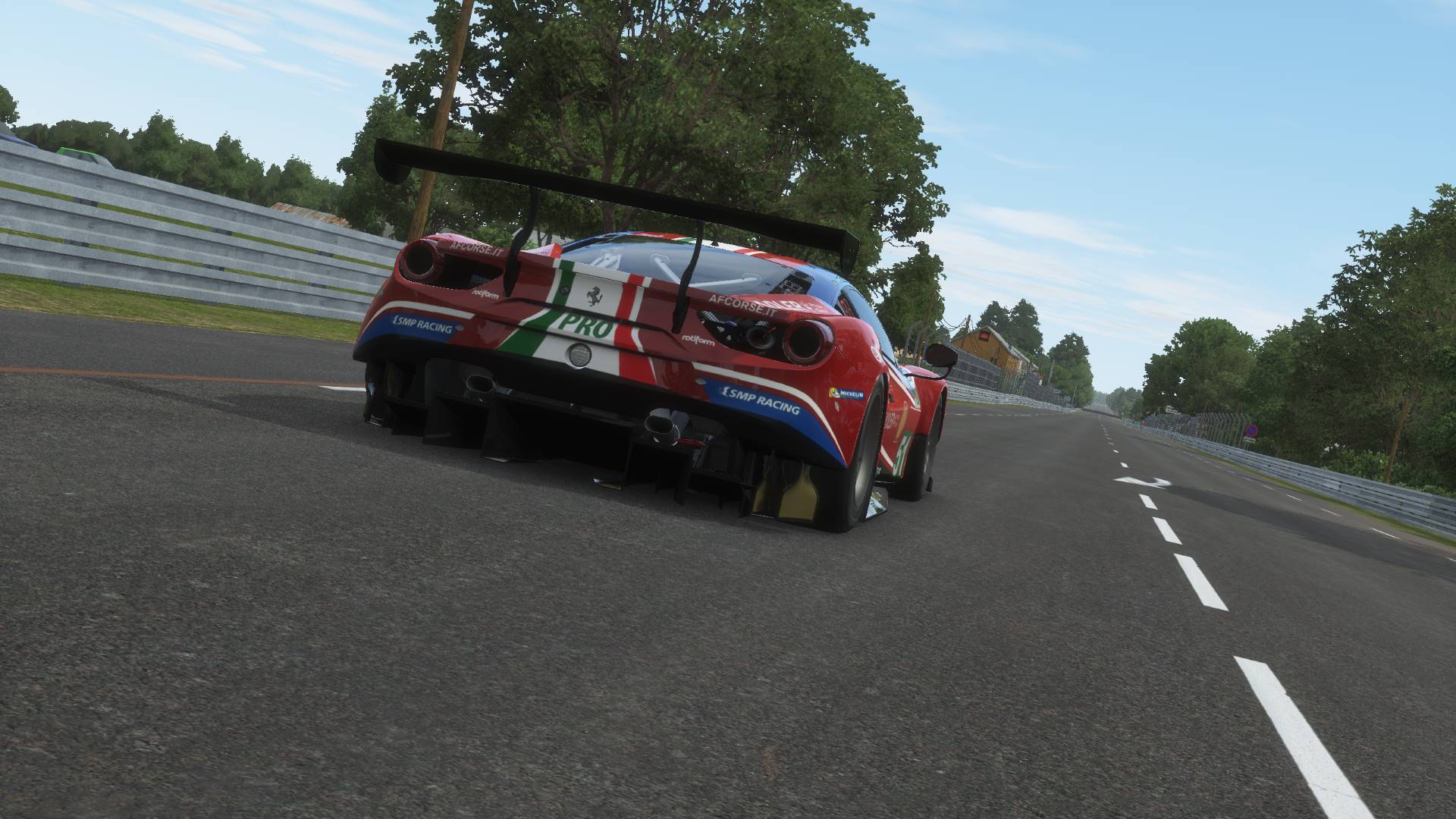One of the more recent track additions to rFactor 2, and arguably one of the most prestigious endurance racing venues in American motorsport – Daytona is every inch the iconic racetrack for both national and international level competition.
Technically, the RC configuration at Daytona could be considered a ‘roval’ – part oval, part road course, but that distinction would be doing the circuit a massive injustice when taken into context of all the venue has to offer. Using considerable portions of the famed Daytona oval banking, the road course layout of this Floridian circuit has rightly earned a reputation as both an enjoyable track to drive, but more importantly, a venue that often produces great racing in a variety of different classes. Offering up a near perfect combination of corners and infrastructure that accommodates one of the biggest endurance races in the world – the Rolex 24 Hours – Daytona is THE traditional start to the season for sportscar racing fans, teams and drivers alike. Without a doubt, an exceptional place to race on the real or virtual tarmac.
Daytona International Speedway | Steam Store: CLICK HERE
History

Surprisingly, Daytona International Speedway hasn’t been around that long, in terms of some of the equally storied venues in world motorsport at least, having only officially welcomed the roar of racing engines for the first time in 1959, following two years of development in order to bring the Daytona Beach location up to permanent racetrack standards. Developed by NASCAR owner Bill France Snr, Daytona has been a mainstay on the NASCAR schedule since that first race in February of 1959.
Initially known as an oval venue, built specifically to allow NASCAR drivers of the era to run at significant speeds while offering great viewing opportunities for trackside fans, Daytona immediately proved to be a hugely popular addition to the growing collection of American circuits, attracting no less than 42,000 fans for the initial Daytona 500 event. That first year, NASCAR racing would be joining by the top level of open wheel competition in the United States with the popular Champ Car series hosting what would become the first motor race ever at the time, until tragedy struck and took the life of driver George Amick – Indycar would not return to the Florida venue.
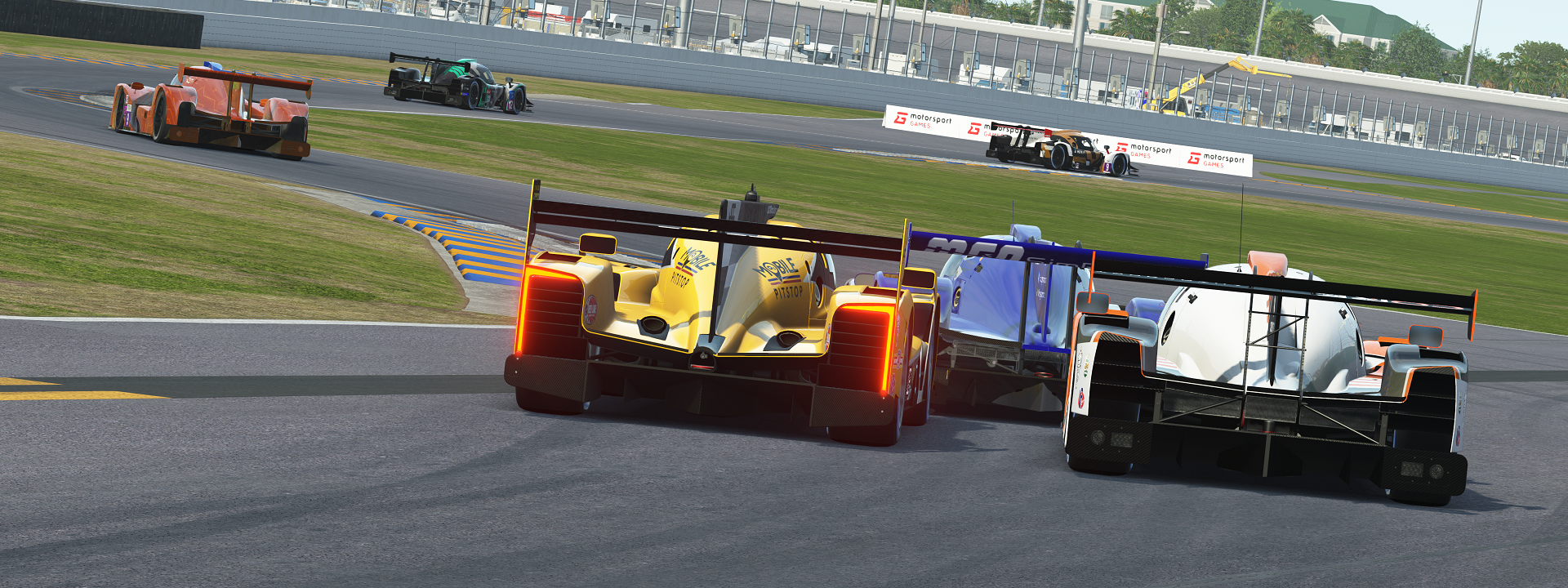
Daytona Pack | Steam Store: CLICK HERE
As well as proving to be a very popular and fast oval circuit, Daytona has also firmly established itself as a potent sportscar venue, with a significant portion of the land within the compound having been taken up to produce the Road Course configuration. Built at the same time as the main oval, the road course wouldn’t see its first competitive action until 1962, when the Daytona Continental 3-hour event played host to a number of national sportscar stars of the era. The Continental would change to a 1000km race the following season, before morphing into the Rolex Daytona 24 Hours in time for the start of the 1966 season.
The track, although simple in nature, has proven itself to be a fantastic venue for endurance racing over the following years, often marking the start of the international sportscar racing season. Somewhat testament to the foresight and engineering skills employed in the original construction of the track, little has changed in the intervening years at Daytona, with the only major renovation work occurring in 1973 and 1984.
For the ’73 season, Daytona introduced a new chicane to reduce speeds ahead of turn three of the oval layout, however despite the obvious safety improvements introduced with the corner, the new chicane was almost universally disliked by drivers, leading to further changes being introduced in the early 1980s – producing what is now known as the ‘Bus Stop’ chicane (now known as the Le Mans Chicane).
During these changes, the circuit owners also took the opportunity to reprofile the first three corners of the lap, adjusted the layout of turns 1 and 2, while reducing the distance towards the third corner of the track and improving overtaking opportunities for drivers. T3, also known as the Rodriguez International Horseshoe, is now one of the clearest passing opportunities at Daytona, and despite it being an hairpin in nature, still retains a flowing nature respected by drivers.
Further, minor changes to the bus stop would be forthcoming in later years, however Daytona retains much of the same challenge and flavour as the original, 1959 configuration.
The Track
- Opened: 1959
- Road Course Length: 3.560 mi (5.729 km)
- Turns: 12
- Location: Daytona Beach, Florida, United States.
- Race lap record: 1:33.724 – Álex Palou, Cadillac DPi-V.R, 2022
Key Corners
T1

The start to any lap is always an important time for a driver, as here you want to set the tone for the following corners and begin your endeavours around the circuit positively. Here at Daytona, Turn 1 is especially difficult for drivers thanks to the rapid approach speed from the preceding run out of the Le Mans Chicane, and over the famed NASCAR banking.
Suboptimal tyre and brake temperatures will greet the drivers as they dive off from the oval banking and hunt for that important braking spot into the first corner, made doubly difficult thanks to the increasing radius of the approach and the need to deal with heavy braking whilst also fighting the steering to ensure the right trajectory is achieved for minimal tyre scrub and avoidance of locking the inside wheel. Top tip for this corner is to get the business of slowing down and positioning done nice and early, so you can fully open up the car on exit and maximize your speed down to the next big breaking event at the Rodriguez International Horseshoe.
Rodriguez International Horseshoe

Likely to be considered as one of the better overtaking opportunities presented to drivers at Daytona, the Rodriguez International Horsehoe is a deceptive corner when approached at speed. Faster and shallower than appears on paper, often leading to difficult moments in traffic should the overtaking car not hold a firm overlap or proves to be hesitant in their attempts to get past.
Approached at high speed thanks to the blast through the small T2 kink immediately following the conclusion of the opening corner, T3 can easily catch out the unwary, and is another of the many corners here at Daytona that requires drivers to absolutely nail the corner exit in order to carry that speed all the way through the following straight before hitting the middle pedal again for a significant stop into the West Horseshoe bend.
West Horseshoe

Another hairpin, another opportunity to overtake, and another corner that looks very different in reality to that on paper.
Key points to this turn has to be the bumpy nature of corner entry, another aspect that drivers have to firmly keep in mind when running long on used tyres, plus the deceptively high entry speeds that encourage late and committed braking in order to hustle the car into the apex and keep any determined rivals from hooking a nose up the inside in search of gaining track position.
Trail braking and a late apex are optimal here to ensure the highest possible minimum corner speed, and maintain strong momentum and early acceleration onto the short straight that follows.
Le Mans Chicane
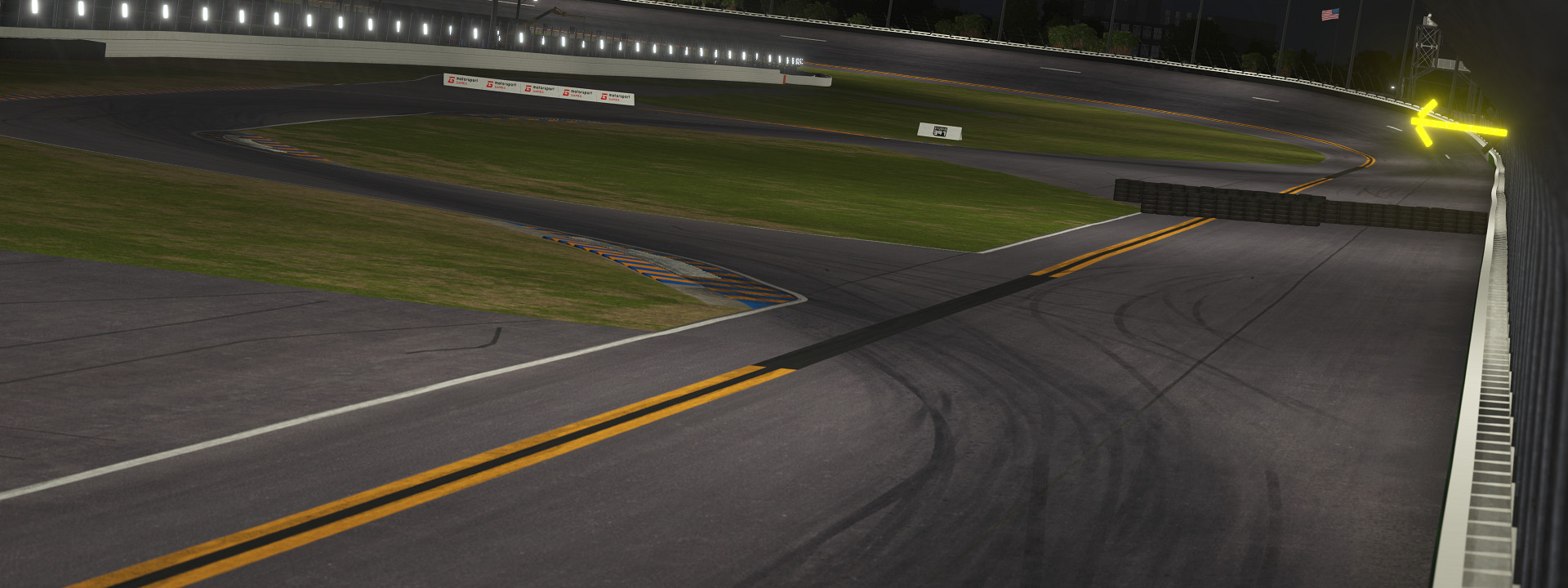
Yes, yes, for many, including me, this corner will forever be known as the ‘Bus Stop Chicane’. Taking its new name from another famous endurance venue, Le Mans, the chicane was originally installed as a way to help keep speeds in check following a long blast through the banking of the NASCAR oval.
On paper this looks like the definition of a hastily put together safety measure corner, one that is very much out of sync with the flow of the Daytona Road Course circuit, however in practice, this part of the track could easily be considered one of the most memorable and spectacular aspects of the entire Daytona lap.
Drivers arrive at the Le Mans Chicane on absolute full throttle before hitting the brakes hard on approach for the first left-hand turn. A good setup here, and plenty of bravery with the curbs reward the committed with a significant lap time advantage over their rivals – get it wrong however, and the Le Mans Chicane offers little in the way of escape from the infield barriers – leaving drivers with the difficult choice of exactly how much room for error they are willing to leave on the racetrack.
Another key aspect to the Le Mans Chicane is the need to once again maximize your minimum speed and corner exit, as a near flat out follow-up chicane is all that separates drivers from this portion of track, and another long blast onto the NASCAR oval to start another tour of the famed circuit.
T11 / T12
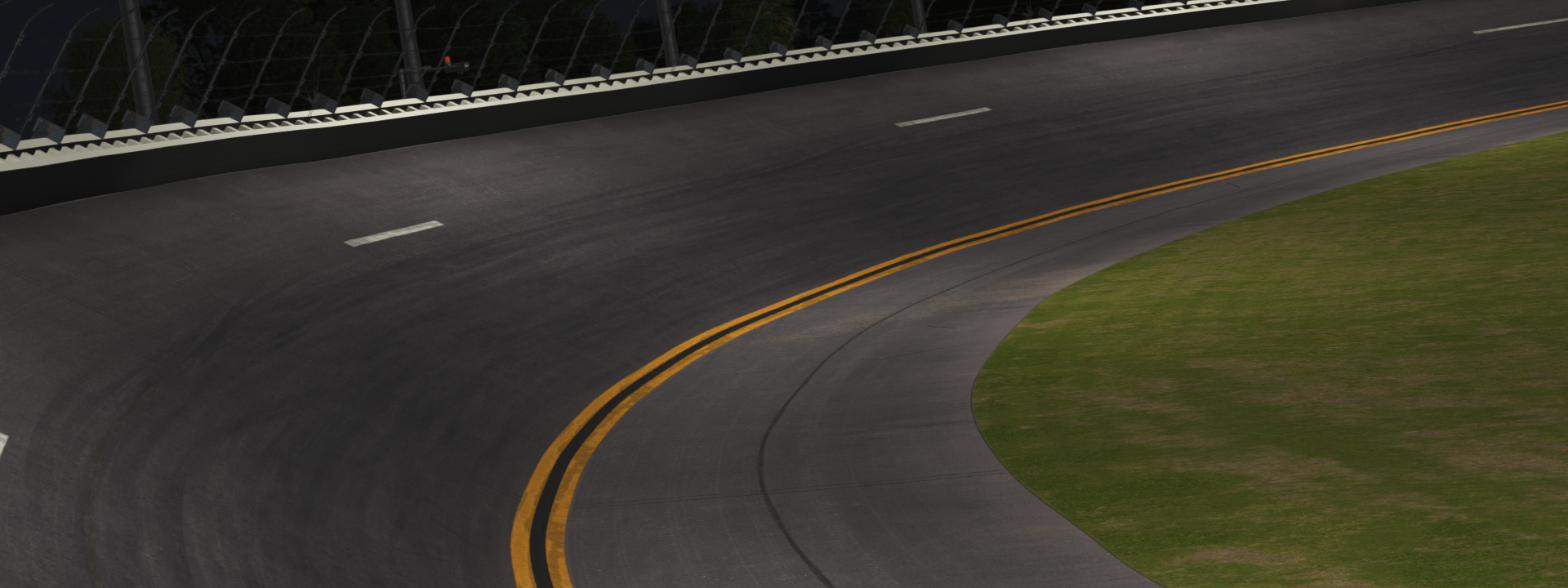
Speaking of blasts onto the oval, turns 11 and 12 are firmly into StockCar territory here, as drivers are left with nothing to do now but keep the foot firmly planted to the floor, and hope they managed to carry enough speed through the Le Mans Chicane section to help propel them through the final banked corners and into the start of another lap.
As with any oval experience, here it is critical to ensure you remain smooth and calm with your steering inputs, follow the fastest groove offered by the track and keep a firm eye ahead and on the mirrors to make your way through any potential traffic situations. A fast, a spectacular and a fitting way to end a lap of one of the best tracks in the whole of the endurance racing calendar.
The last encounter before the end of the lap, the Ford Chicane is one of the more traditional types of corner to be found at Le Mans, yet much like the rest of the circuit, the seemingly simple nature of the configuration easily hides opportunities to both win or lose critical lap time if not attacked with appropriate levels of precision and commitment. Possibly one of the slower and more frustrating sections of this mammoth venue, the Ford Chicane is nevertheless an entertaining ride if done right, and oh so very easy to get it wrong and bounce over the aggressive curbing that lines the circuit, and straight into difficulty at the furtherest post of the track from the pit lane entry for good measure.
The Daytona International Raceway in rFactor 2 offers the most recent version of this circuit in sim racing. Developed with the aid of detailed laserscanning technology, and featuring both the sportscar Road Course and oval configurations, Daytona International Raceway has very quickly risen to the top of many players ‘must have’ list of tracks for the simulation. Available as both a standalone item, part of the Daytona Pack and the mighty 2022 Q1 Pack featuring the 2022 NTT INDYCAR, Ligier JS P320 LMP3 and BMW M4 GT3 in the rFactor 2 Steam Store, if you want your endurance racing thrills, then Daytona is the track for you!
Daytona International Speedway – Available now in rFactor 2
